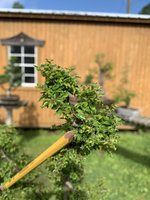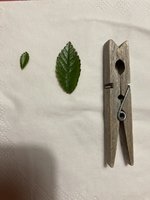Glyphosate, which is Roundup, Needs to come in contact with leaves or the living cambium of a tree or shrub in order to be absorbed in quantity to be effective. Sprayed around the base of a tree with intact bark will not harm the tree at all. Soil microbes and UV in sunlight rapidly decompose glyphosate.
@Forsoothe! - Glyphosate works by inhibiting the manufacture of 3 amino acids in the growing bud tips of plants. It does not interfere with the DNA. Glyphosate is highly unlikely to induce polyploidy in the sprayed plant. Any leaf miniaturization caused by Glyphosate is temporary, if the plant survives, in time normal growth will return.
You are probably thinking of Oryzalin and other dinitroaniline group herbicides. The dinitroaniline herbicides work by interfering with the growth of microtubules to disrupt growth. The dinitroaniline herbicides can be used to cause changes in polyploidy. Oryzalin and other dinitroaniline herbicides are MUCH safer to use for creating polyploids in plants than using colchicine. Oryzalin and other herbicides are designed to attack plant microtubules, where colchicine is dangerous as it preferentially attacks mammalian microtubules.
So if anyone out there wants to increase polyploidy in their plants, (hosta daylilies, or orchids for example) look for methods that use dinitroaniline rather than colchicine. Colchicine is dangerous for home use.




